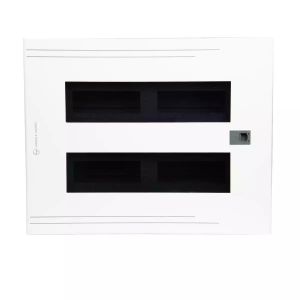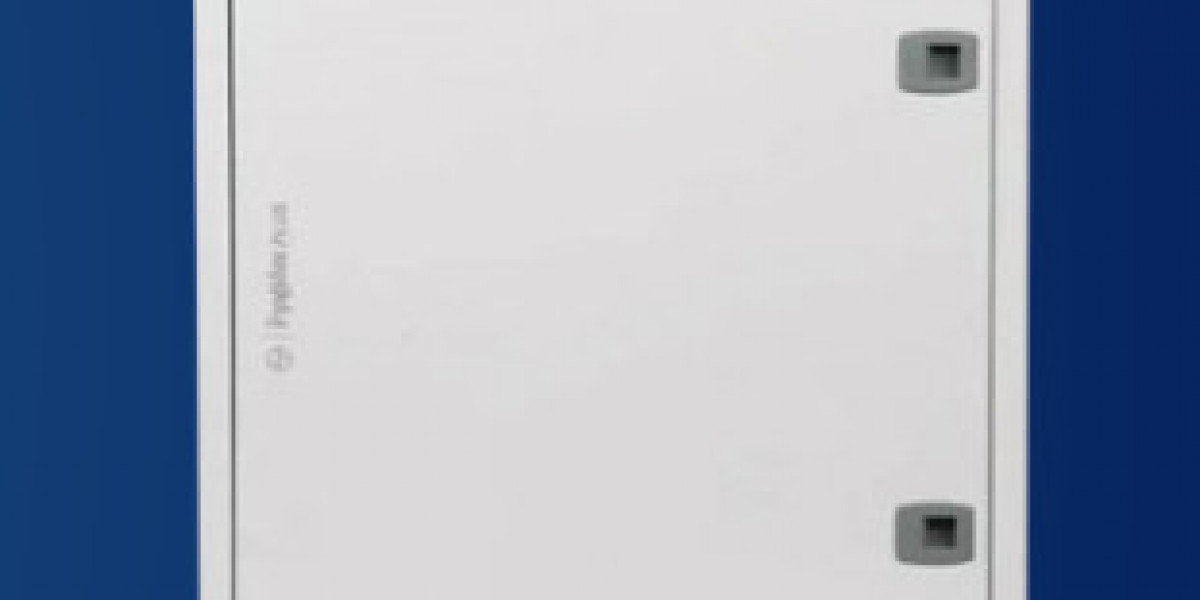
Power panel boards play a critical role in the safe and efficient distribution of electricity within a facility. Whether you're managing a manufacturing plant, a commercial building, or a residential complex, selecting the right power panel board ensures that your electrical system functions optimally. It also protects your equipment from power surges, overloads, and potential hazards. This guide will help you navigate the factors to consider when choosing the right power panel board for your facility, ensuring you make a well-informed decision for long-term safety and efficiency.
What is a Power Panel Board?
A power panel board, also known as an electrical distribution board, is a crucial component in any electrical setup. It serves as the central point where electrical circuits are controlled and distributed to different parts of the facility. The board houses circuit breakers, fuses, and other safety devices to manage the flow of electricity and protect the system from faults.
The power panel board connects to the main power supply and ensures that electricity is distributed efficiently across the facility while protecting against overloads, short circuits, and other electrical hazards. By incorporating various protection mechanisms, it enhances the safety and longevity of electrical systems.
Key Considerations When Choosing a Power Panel Board
Selecting the right power panel board for your facility is essential for both safety and operational efficiency. The following factors should be considered before making a purchase:
Load Capacity
The first and most important factor to consider when choosing a power panel board is the load capacity. Load capacity refers to the amount of electrical power the panel can safely distribute without risking overload or damage. To determine the appropriate load capacity, you need to assess the total power demand of all equipment and machinery that will be connected to the panel.
Residential Facilities: For residential setups, the power panel board should be able to handle the cumulative load of appliances, lights, and HVAC systems.
Commercial and Industrial Facilities: These setups typically require a much higher load capacity due to the number of high-power-consuming machines and devices. It’s crucial to calculate the peak load and ensure that the panel board can accommodate it without any strain.
Choosing a power panel board with adequate load capacity is essential to avoid overloading and potential equipment failure.
Number of Circuits
The number of circuits in a power panel board determines how many different electrical systems can be connected and managed. A circuit breaker is installed for each circuit, which acts as a safety mechanism to interrupt power in case of an overload or short circuit. The number of circuits in your facility should align with the number of separate electrical systems or sub-systems that you need to control.
Residential Needs: In a residential setup, a smaller power panel board with fewer circuits is typically required.
Commercial and Industrial Needs: For larger facilities, more circuits are needed to manage power distribution boards across various systems, such as lighting, machinery, and heating, ventilation, and air conditioning (HVAC) systems.
Choosing a power panel board with the right number of circuits ensures that each system is properly protected and can function independently without interference.
Type of Protection Features
Power panel boards come equipped with a variety of protection features to ensure the safety of the electrical system. The type of protection you need depends on the facility’s requirements, but these features typically include:
Circuit Breakers: These are used to disconnect the power supply when an overload or short circuit occurs. The power panel board should be equipped with the right type of circuit breakers (e.g., thermal or magnetic breakers) for the facility’s power needs.
Fuses: Fuses are used to protect circuits by breaking the connection when the current exceeds a certain level. Fuses are common in low-voltage systems, but they are less common in larger systems that use circuit breakers.
Surge Protection Devices: These devices protect the electrical system from power surges that can result from lightning strikes or electrical faults. They are essential for sensitive electronic equipment and high-power machinery.
Residual Current Devices (RCDs): RCDs are critical for detecting and preventing electrical leaks or faults that could lead to electric shocks. They are highly recommended for facilities with high human traffic or where electrical safety is paramount.
Choosing a power panel board with appropriate protection mechanisms ensures the safety of both the electrical system and the personnel working with it.
Size and Space Considerations
The physical size of the power panel board is another important factor to consider. Your facility’s available space for installing the power panel board will determine which options are suitable. A compact and space-efficient panel is ideal for small setups, while larger panels are required for more complex systems with multiple circuits.
Before selecting a power panel board, take accurate measurements of the installation space to ensure that the panel can be installed safely and without obstruction. It’s also important to allow for easy access to the panel for maintenance and inspection.
Electrical Standards and Compliance
Electrical safety standards and regulations vary by country, region, and industry. The power panel board you select must comply with local electrical codes and safety regulations. These standards are in place to ensure that electrical systems are installed correctly and function safely.
National Electrical Code (NEC): In the U.S., the NEC governs the installation of electrical systems, including panel boards. Make sure that the power panel board you choose is NEC-compliant.
IEC Standards: In other regions, the International Electrotechnical Commission (IEC) sets standards for electrical systems, including power panel boards.
Ensure that the power panel board you select is designed and certified according to these standards to avoid potential legal or safety issues.
Brand and Manufacturer Reputation
Choosing a reputable brand and manufacturer for your power panel board is essential for ensuring quality and reliability. Well-established companies often provide high-quality products with excellent customer support and warranties. Additionally, trusted manufacturers are more likely to comply with industry safety standards and offer long-lasting products.
Ease of Maintenance and Upgrade
Over time, electrical systems may need upgrades or maintenance. A good power panel board should be easy to maintain and upgrade as needed. Look for features such as:
Modular Design: This allows you to add or remove components (such as breakers or fuses) easily.
Clear Labeling: Proper labeling helps identify circuits and makes it easier to troubleshoot issues during maintenance.
Additionally, a power panel board with accessible compartments or doors will make regular inspections and maintenance tasks more efficient.
Benefits of Choosing the Right Power Panel Board
When you invest in the right power panel board for your facility, you can enjoy several key benefits, including:
Increased Safety
The primary benefit of a well-chosen power panel board is the safety it provides. By selecting a board with the appropriate protection features, you minimize the risk of electrical hazards such as fires, overloads, and shocks. Proper protection also ensures that your equipment is safe from power surges and malfunctions.
Operational Efficiency
A properly selected power panel board ensures that power is distributed efficiently across all circuits, reducing energy waste and improving the overall operational performance of your electrical system. With an appropriate load capacity and number of circuits, your facility can operate without interruptions or downtime.
Cost Savings
By selecting the right power panel board, you reduce the likelihood of costly electrical failures, equipment damage, and repairs. Moreover, an energy-efficient electrical distribution system can lead to lower electricity bills and operational costs over time.
Long-Term Durability
Investing in a high-quality power panel board ensures long-term durability. A reliable and well-constructed power panel will last for years without the need for frequent repairs or replacements. This helps to extend the lifespan of your electrical system and maintain its optimal performance.
Pricing Insights for Power Panel Boards
The price of power panel boards varies depending on several factors, including:
Capacity: Higher capacity boards typically cost more because they can handle larger loads.
Number of Circuits: More circuits mean more complex panels, which can drive up the price.
Features and Protection: Additional features such as surge protection, fuses, or advanced circuit breakers may increase the cost.
Brand: Reputable brands with a history of reliability may charge more for their products.
On average, prices can range from $200 for small, basic power panel boards to $2,000 or more for larger, more complex systems. It is important to balance quality, features, and price to find the best value for your needs.
Conclusion
Choosing the right power panel board for your facility is a critical decision that can affect the safety, efficiency, and longevity of your electrical system. By considering factors such as load capacity, number of circuits, protection features, and space, you can make an informed choice that meets your specific requirements. Additionally, selecting a reputable manufacturer, such as Lauritz Knudsen Electrical & Automation, ensures that you receive a high-quality, reliable product that complies with safety standards.
At Lauritz Knudsen Electrical & Automation, we offer a wide range of power panel boards designed for various industrial and commercial applications. Their products are known for their durability, efficiency, and safety features. With their expertise, you can trust that your facility’s electrical distribution system is in safe hands.










